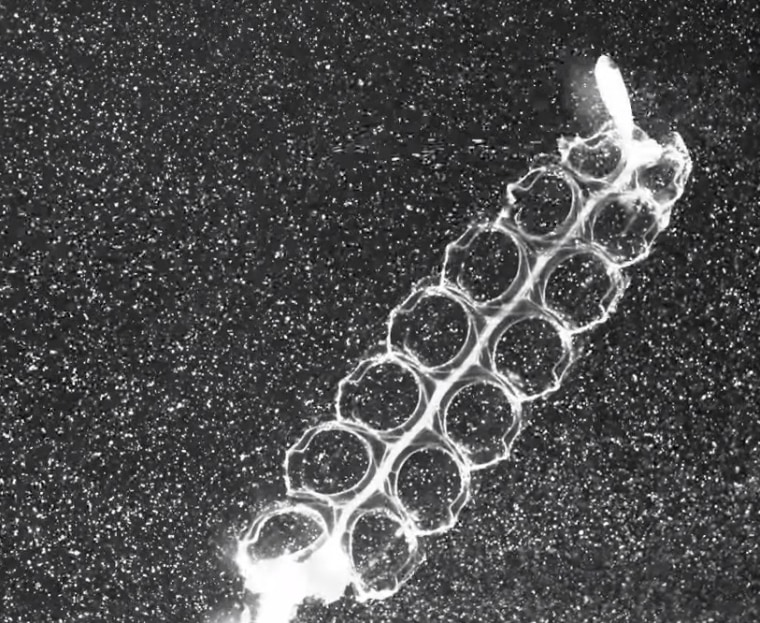It takes all kinds, they say — and they may not know that applies not just to people, but to predatory plankton. A new study shows that the members of a colonial plankton organism known as Nanomia bijuga have a particularly effective division of labor, despite being brainless.

Nanomia is a "siphonophore," a jellyfish-like predator that appears to be a single animal but is in fact many smaller "zooids" working together. Colonial animals like siphonophore and corals have to cooperate to stay alive, but Nanomia takes it to a new level.
At the very front of the colony, according to the study, one reliably finds the youngest members, with a body type specializing in propulsion. But because they have yet to grow large enough to be the main engine, the young take charge of steering the colony toward fresh hunting grounds. Older, larger zooids are the next in line, using their jets to advance the group.
Bringing up the rear are the zooids that specialize in breeding and feeding. All together, Nanomia forms a sort of aquatic village, with the young at the helm, the adults at the oars and everyone else taking care of life's necessities.
The study, led by John Costello of Woods Hole's Marine Biological Laboratory, appeared Tuesday in the journal Nature Communications.
